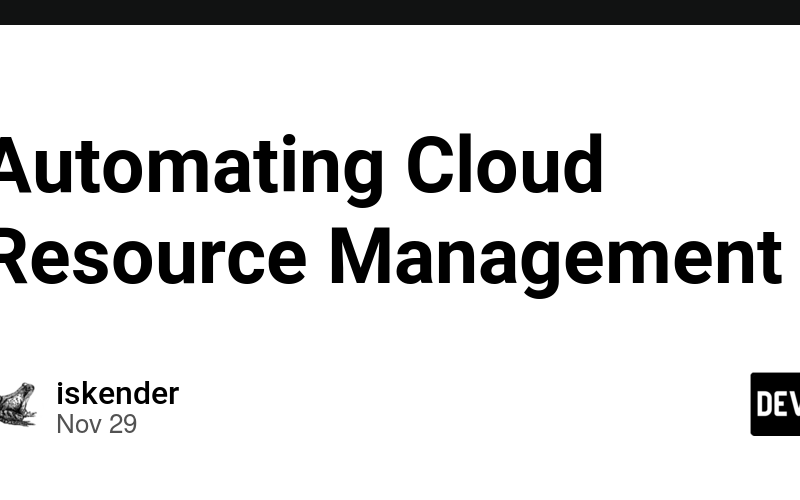Automating Cloud Resource Management
Introduction
Cloud computing has revolutionized the IT landscape, providing businesses with on-demand access to computing resources, scalability, and cost savings. However, managing cloud resources can be a complex and time-consuming task. Automating cloud resource management through the use of tools and techniques can alleviate these challenges, enhance operational efficiency, and drive cloud optimization.
Benefits of Automating Cloud Resource Management
- Reduced costs: Automation eliminates the need for manual effort, reducing labor costs associated with resource provisioning, scaling, and maintenance.
- Improved efficiency: Automated processes streamline resource management tasks, freeing up IT resources to focus on higher-value activities.
- Enhanced security: Automation can enforce security policies and perform audits, reducing the risk of security breaches and compliance violations.
- Increased scalability: Automated resource management systems can dynamically scale resources based on demand, ensuring optimal performance and avoiding resource bottlenecks.
- Better cloud optimization: Automation enables data-driven insights into cloud resource usage, allowing organizations to identify underutilized resources and optimize their cloud spend.
Components of an Automated Cloud Resource Management System
- Orchestration tools: These tools manage the provisioning, configuration, and decommissioning of cloud resources. Examples include Terraform, Ansible, and Puppet.
- Monitoring and alerting systems: These systems track resource usage, performance metrics, and security events, triggering alerts when thresholds are exceeded. Examples include CloudWatch, Datadog, and New Relic.
- Auto-scaling mechanisms: These mechanisms automatically adjust the number of resources allocated based on demand. Examples include AWS Auto Scaling and Azure Virtual Machine Scale Sets.
- Policy-based management: This approach defines rules and policies that govern resource allocation and usage, ensuring compliance and alignment with business objectives. Examples include Cloud IAM and Azure Role-Based Access Control (RBAC).
Steps to Automate Cloud Resource Management
- Define automation goals: Identify the specific tasks and processes that will be automated, including resource provisioning, scaling, monitoring, and security.
- Select appropriate tools and technologies: Evaluate available tools and choose those that best align with the automation goals and cloud platforms used.
- Develop and implement automation scripts: Create scripts or code that automate the identified tasks, leveraging the capabilities of the chosen tools.
- Test and validate automation: Thoroughly test and validate the automated processes to ensure they are functioning as intended and meet the desired outcomes.
- Monitor and maintain automation: Regularly monitor the automated systems to ensure their continued functionality and make necessary adjustments as needed.
Best Practices for Automating Cloud Resource Management
- Use a central management platform: Establish a single point of control for all cloud resource management activities to ensure consistency and avoid fragmentation.
- Adopt a cloud-native approach: Leverage cloud-specific features and APIs to automate resource management tasks effectively.
- Implement self-healing mechanisms: Design automated systems that can detect and respond to resource failures or performance issues.
- Monitor and audit regularly: Track the success and performance of automated processes, and conduct regular audits to ensure security and compliance.
- Seek external expertise: Consider consulting with experienced cloud providers or managed service providers to assist with automation implementation and optimization.
Conclusion
Automating cloud resource management is essential for organizations seeking to maximize the benefits of cloud computing. By leveraging the right tools and techniques, organizations can reduce costs, improve efficiency, enhance security, achieve scalability, and optimize their cloud usage. Careful planning, implementation, and maintenance of automation systems are crucial for successful and sustainable cloud resource management.
Source link
lol

